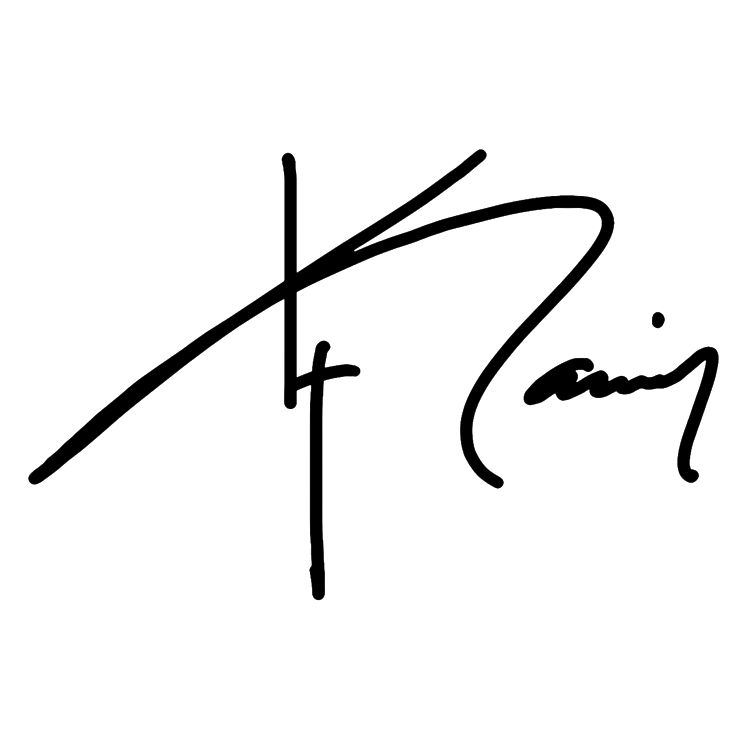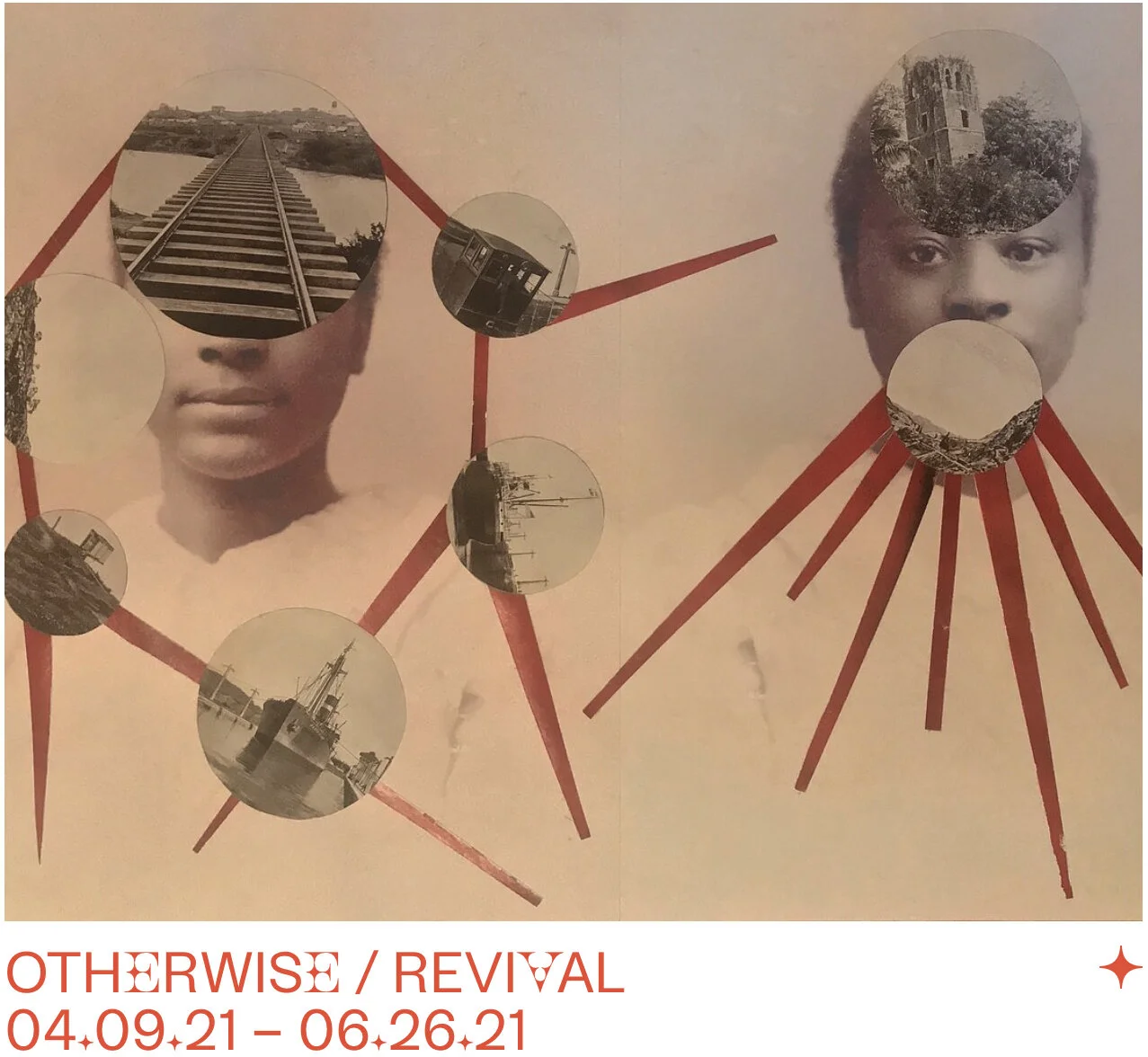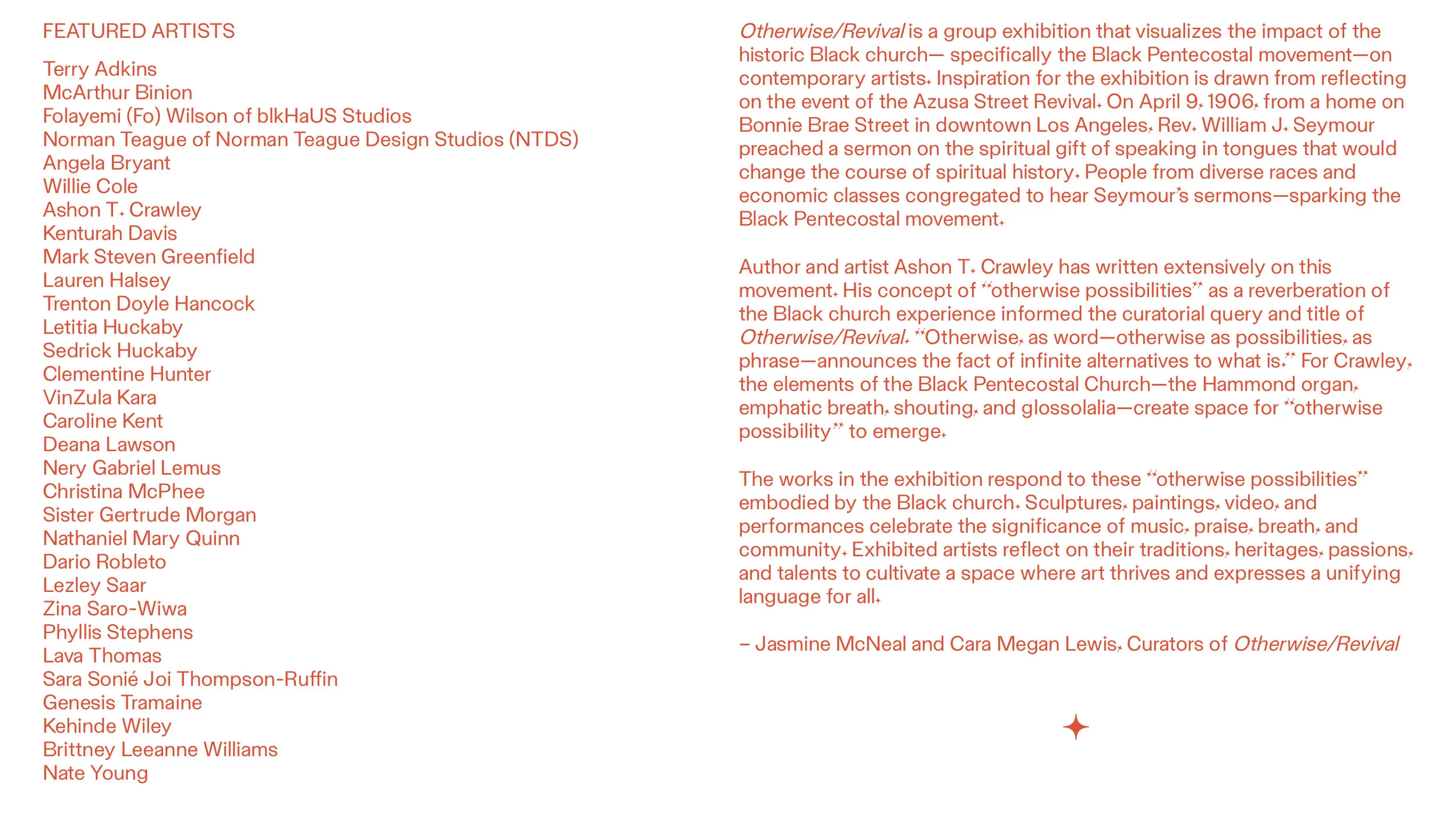Lines of Thought: Kenturah Davis, Mary Kelly and Agnes Martin
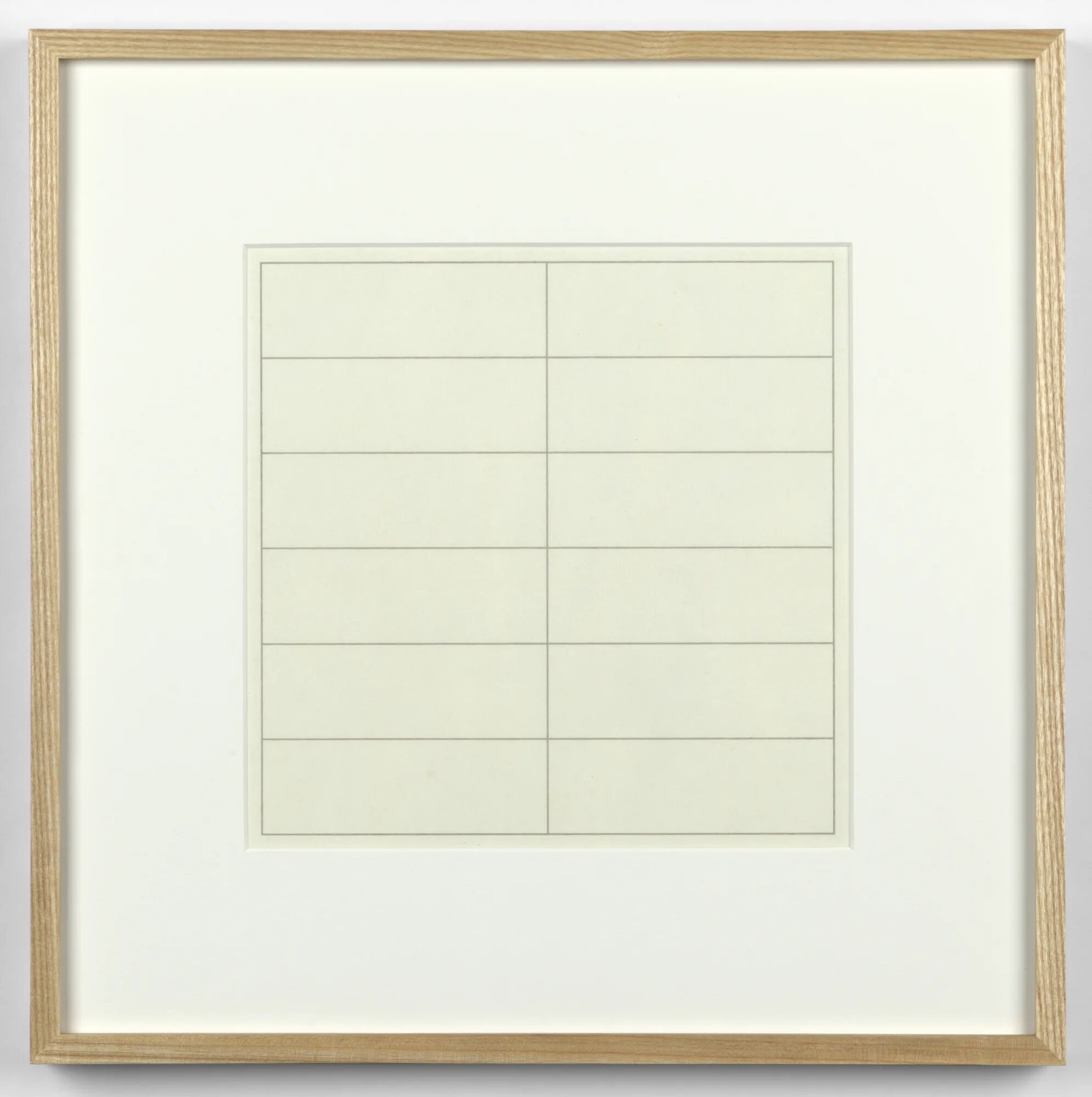
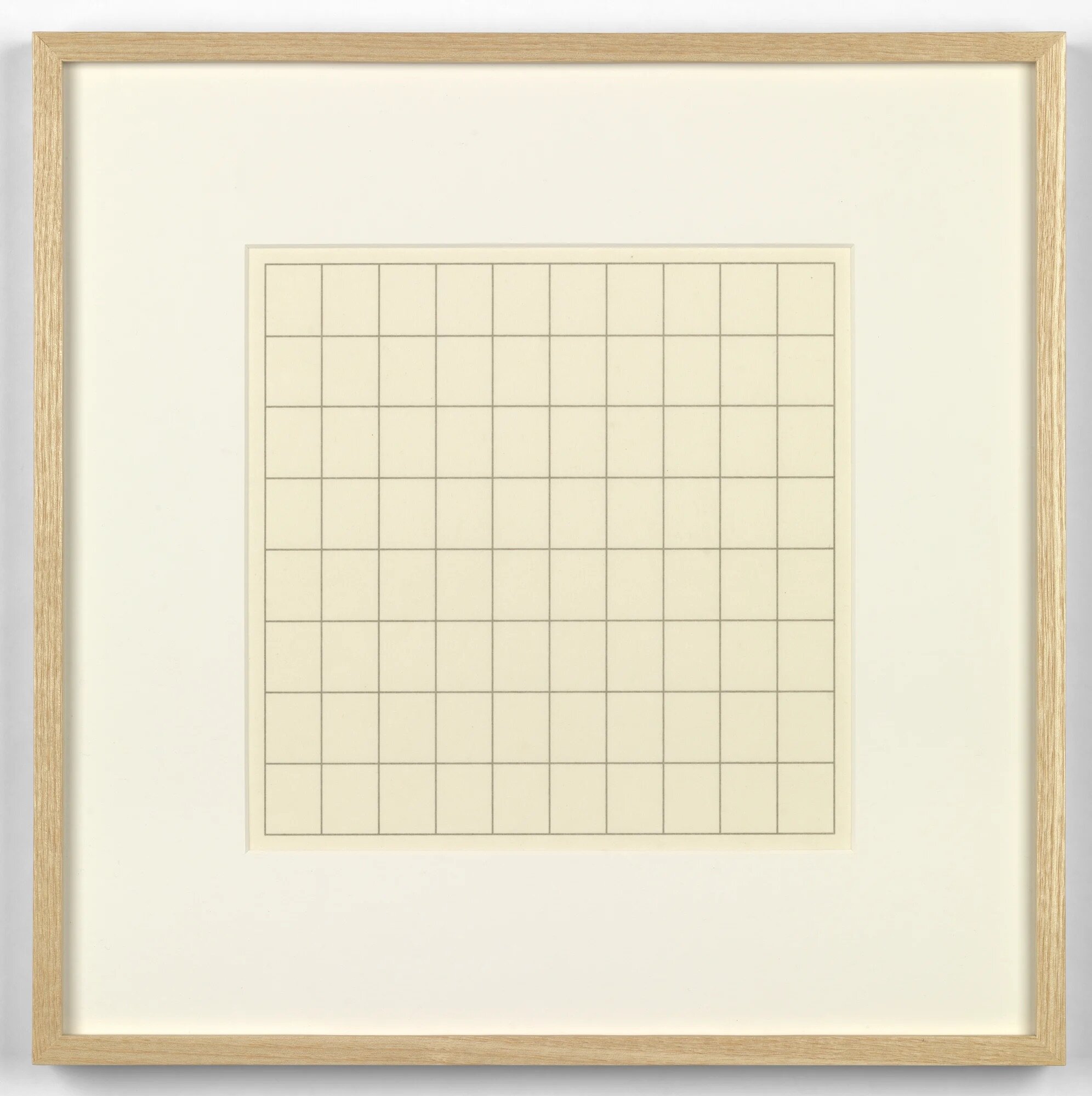

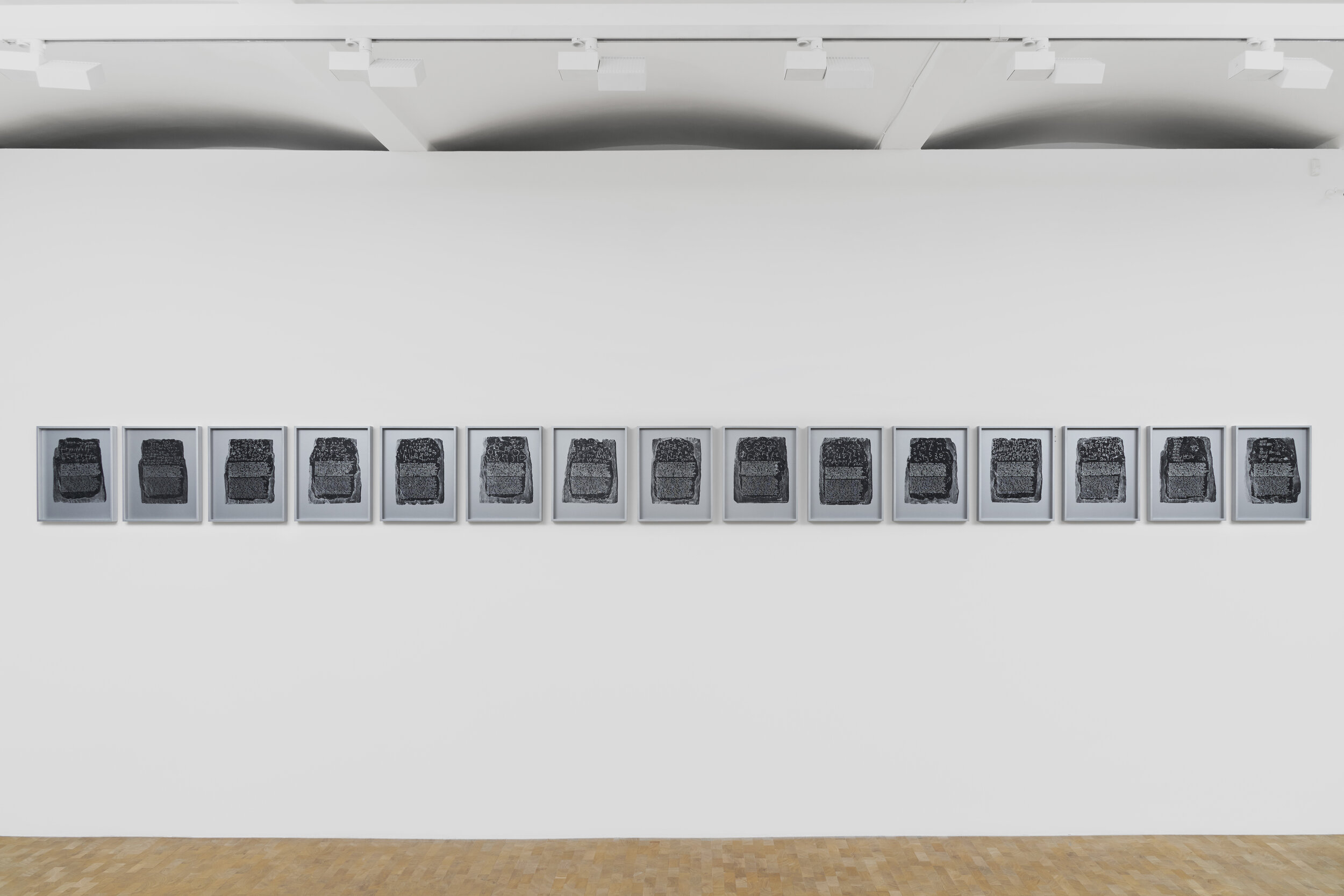
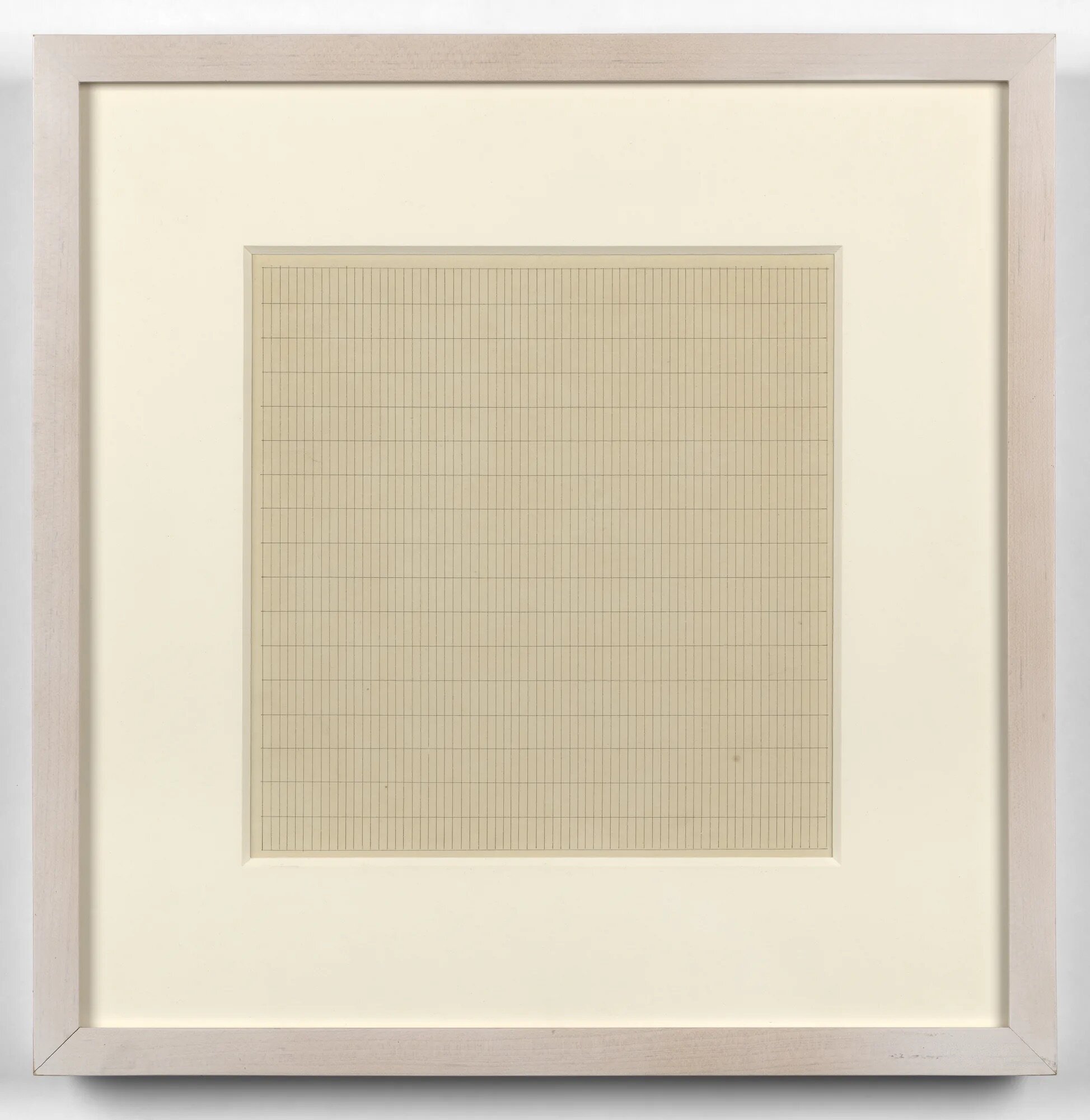
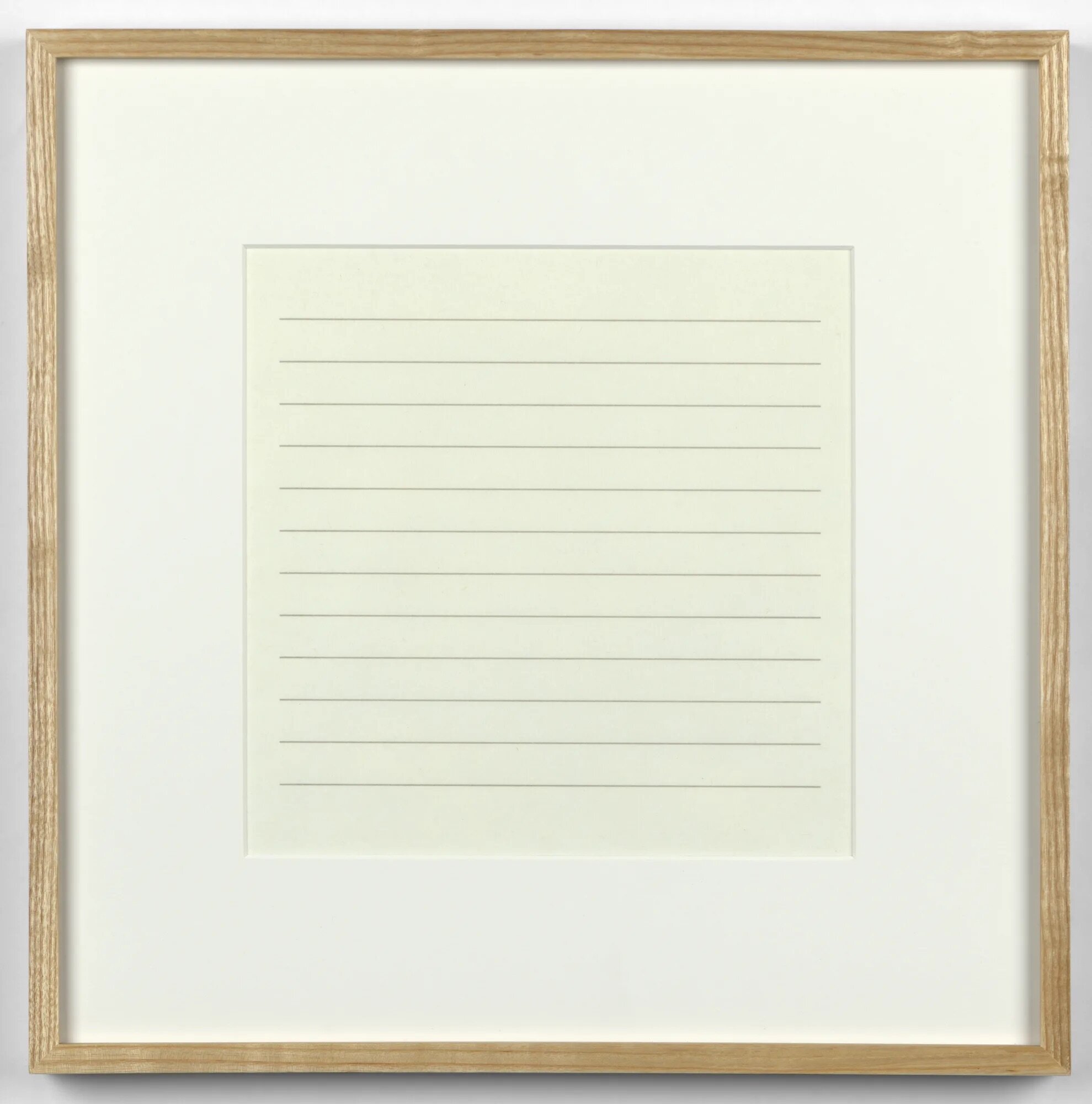
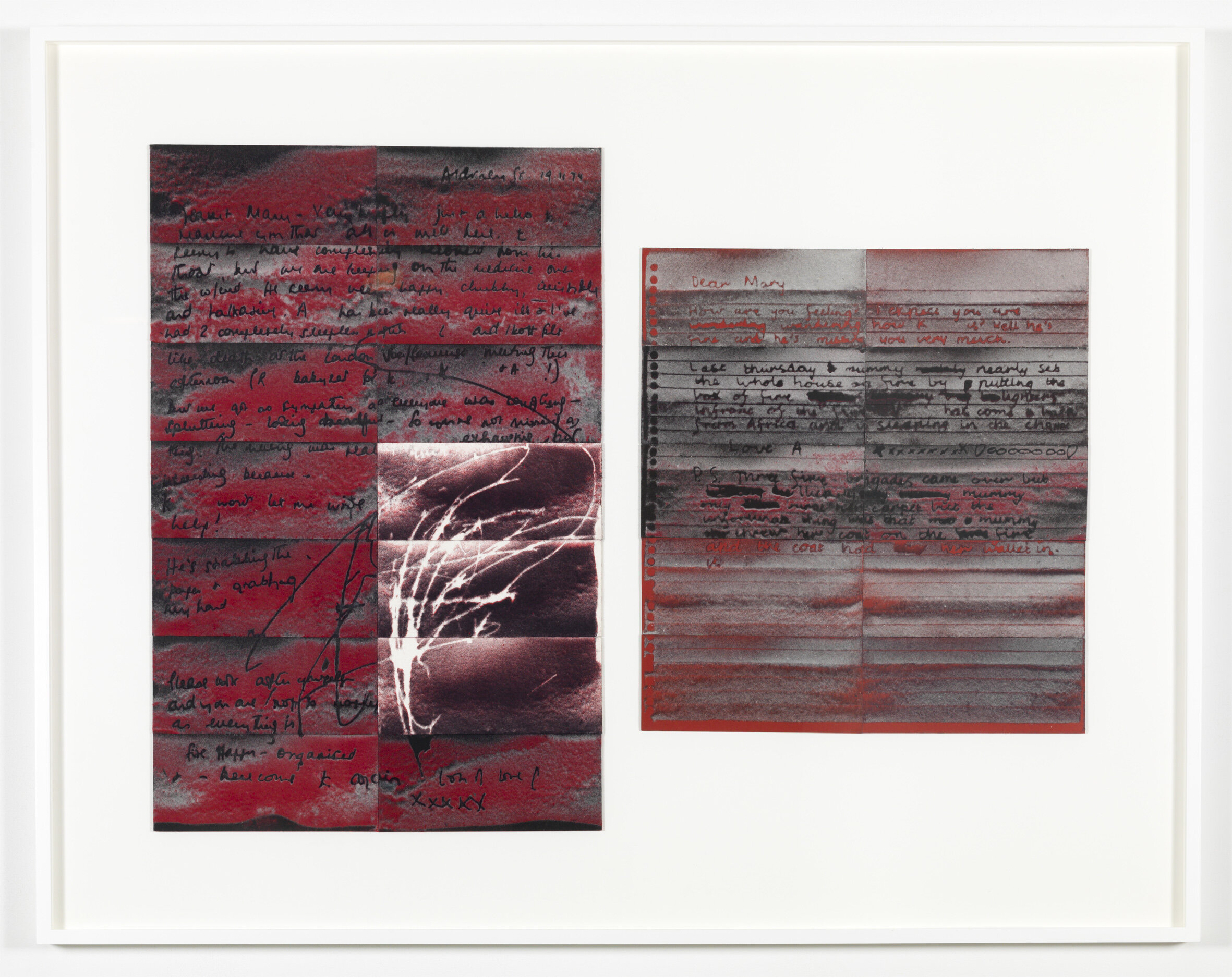
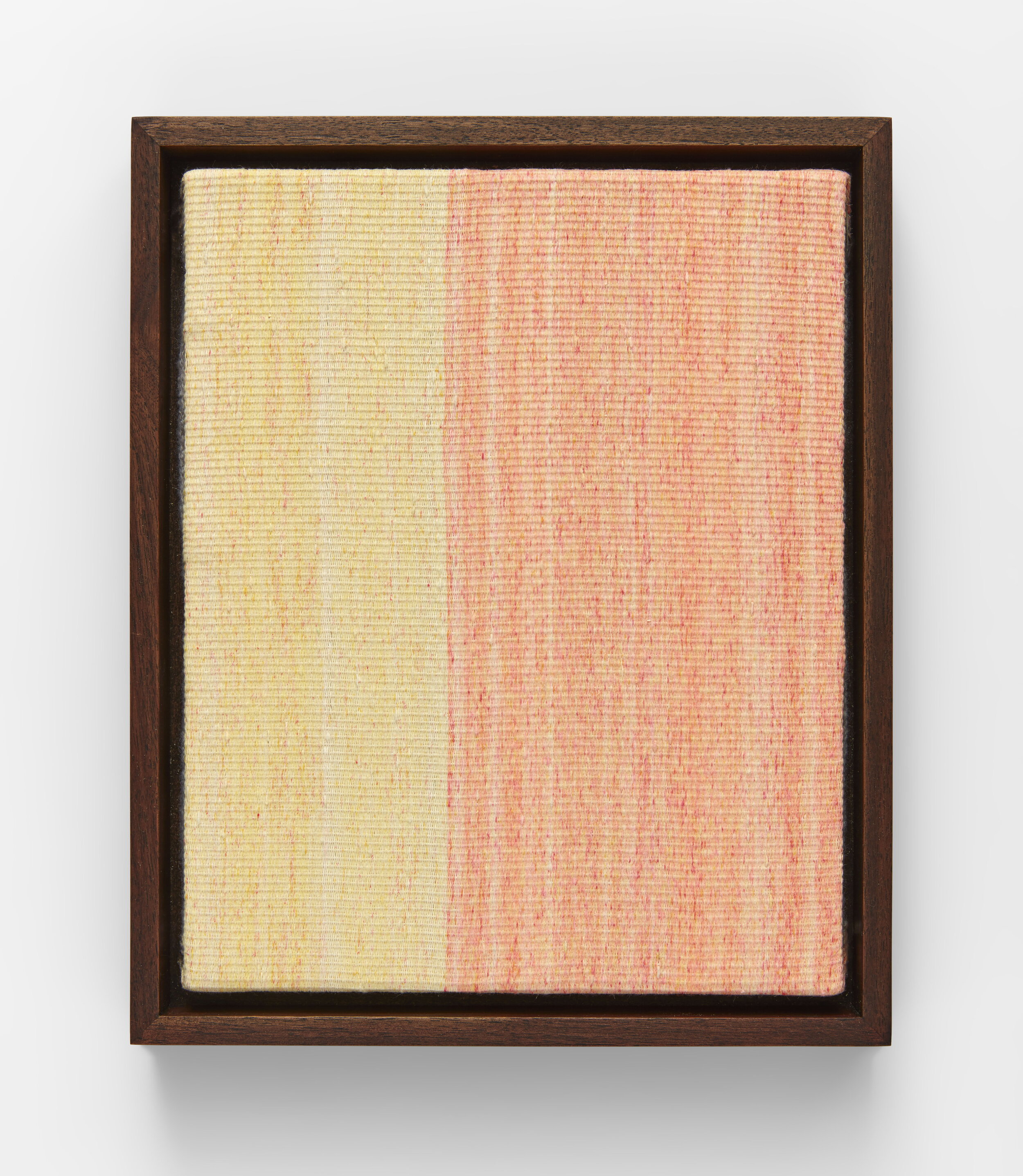
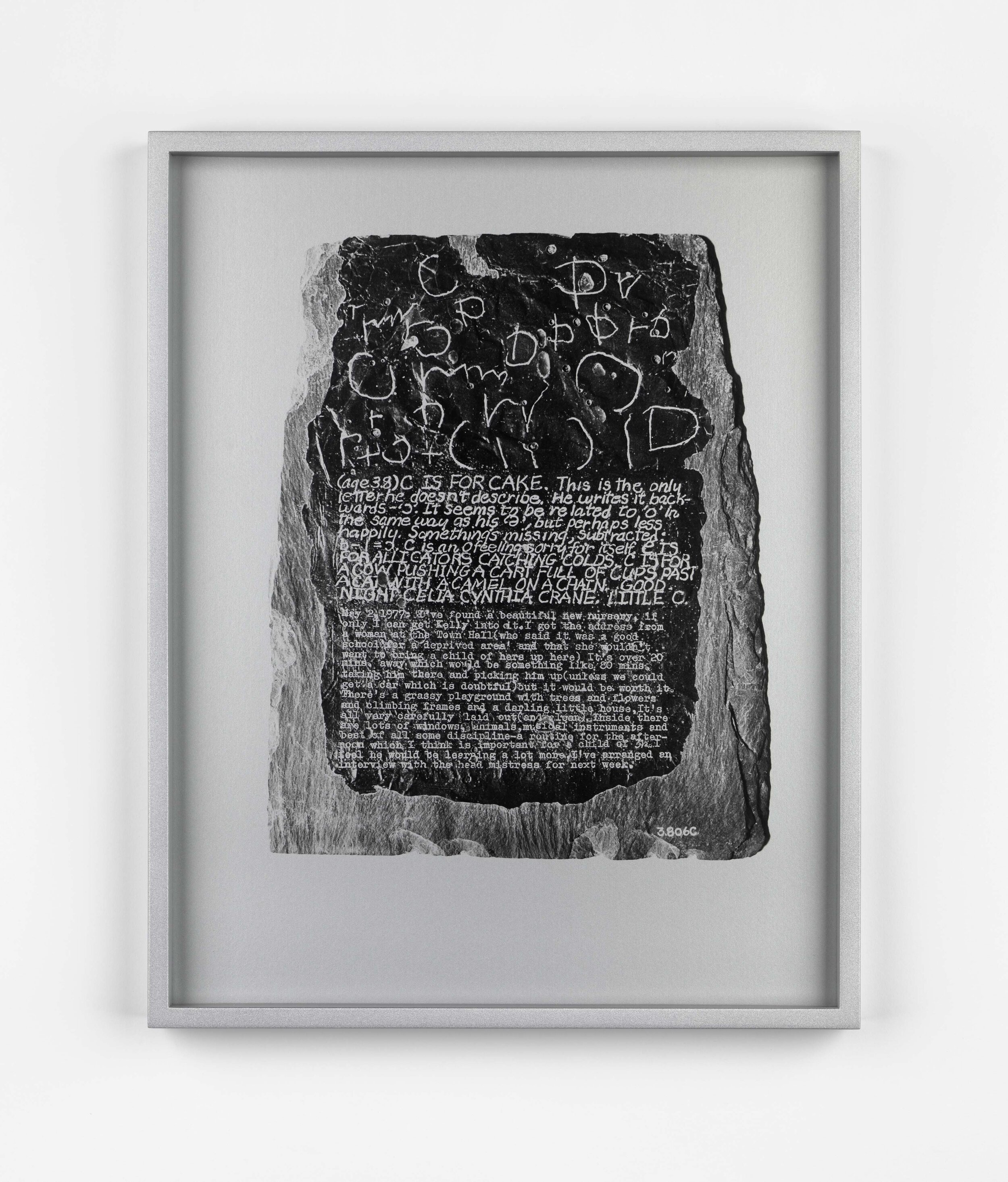
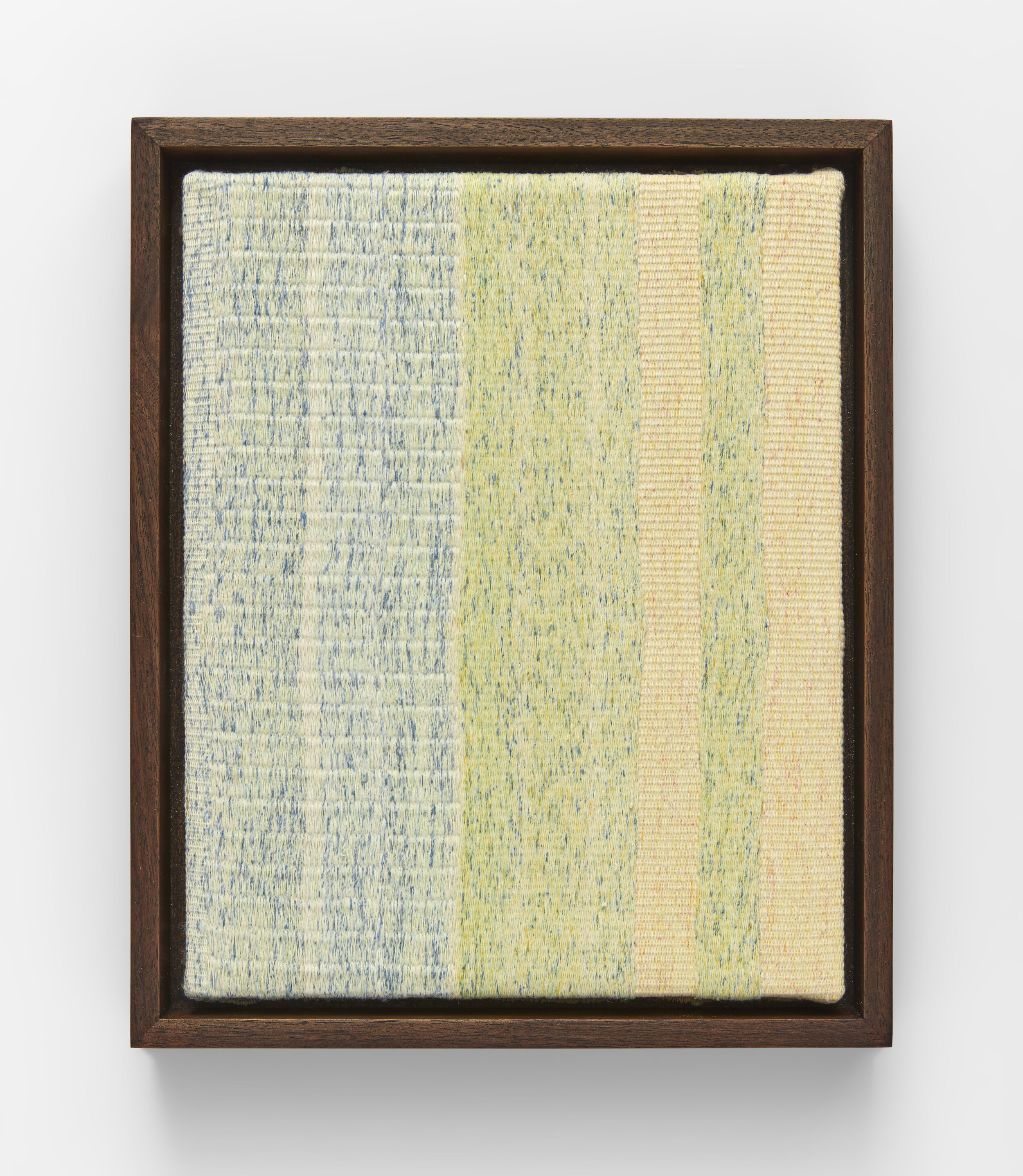
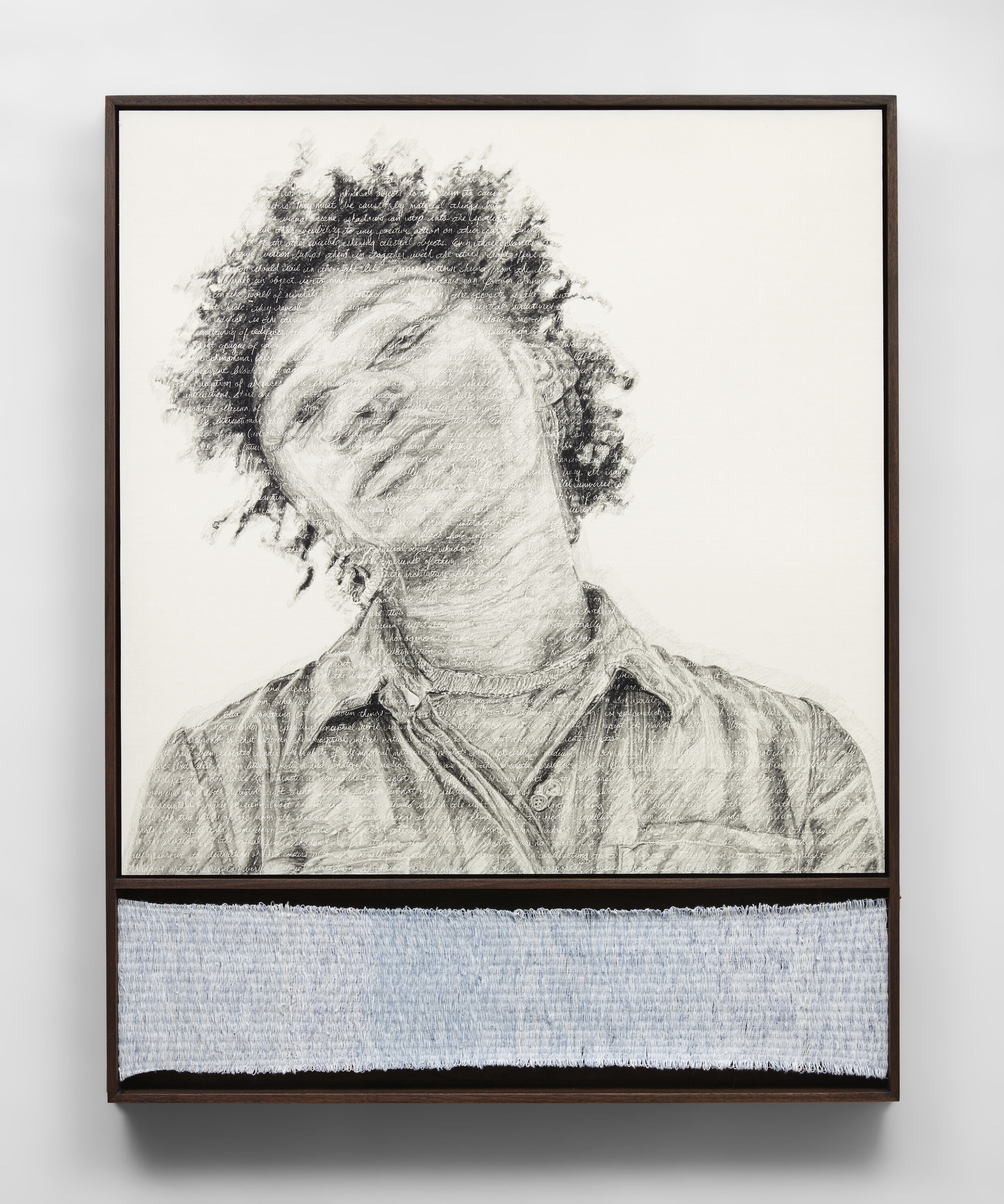
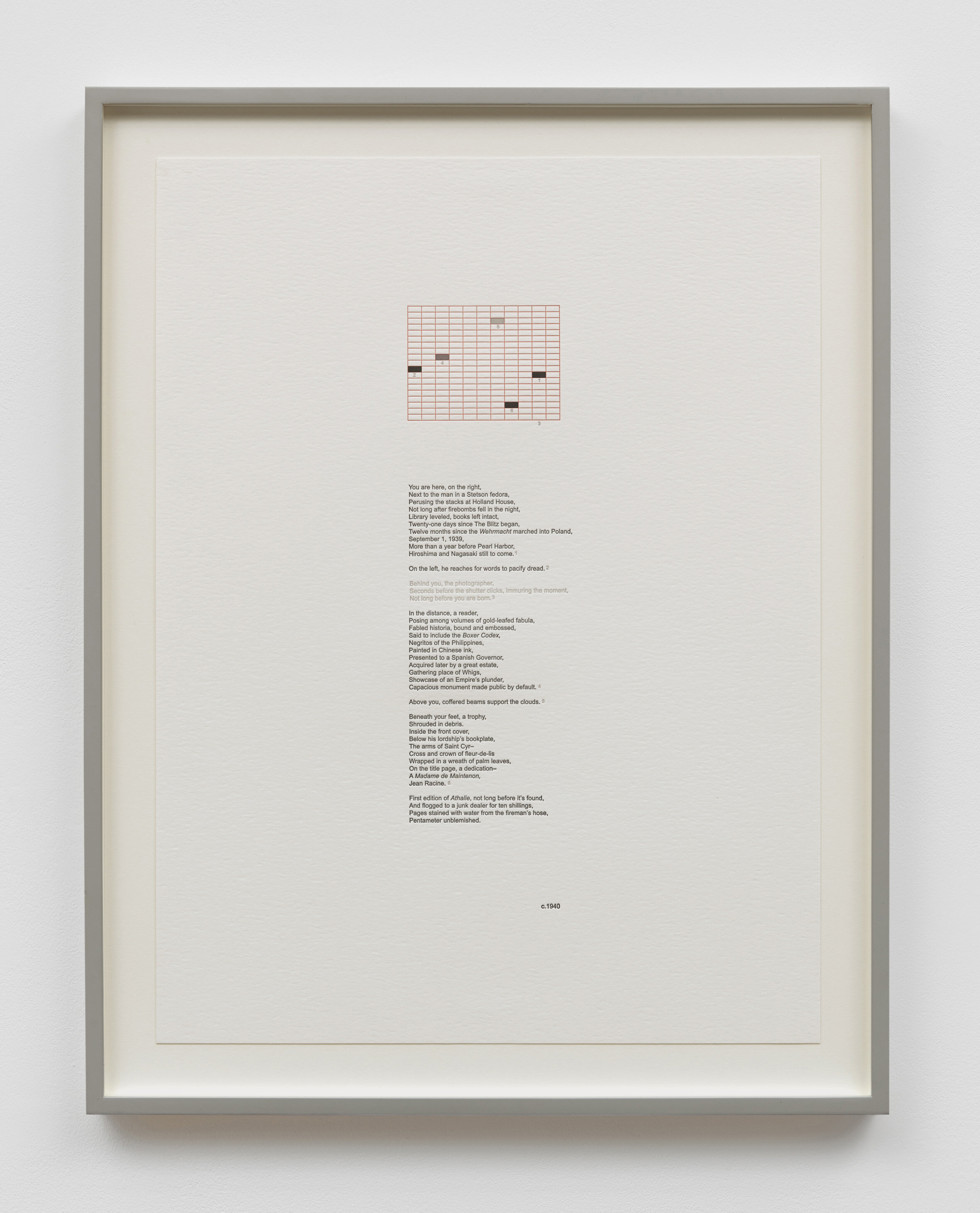
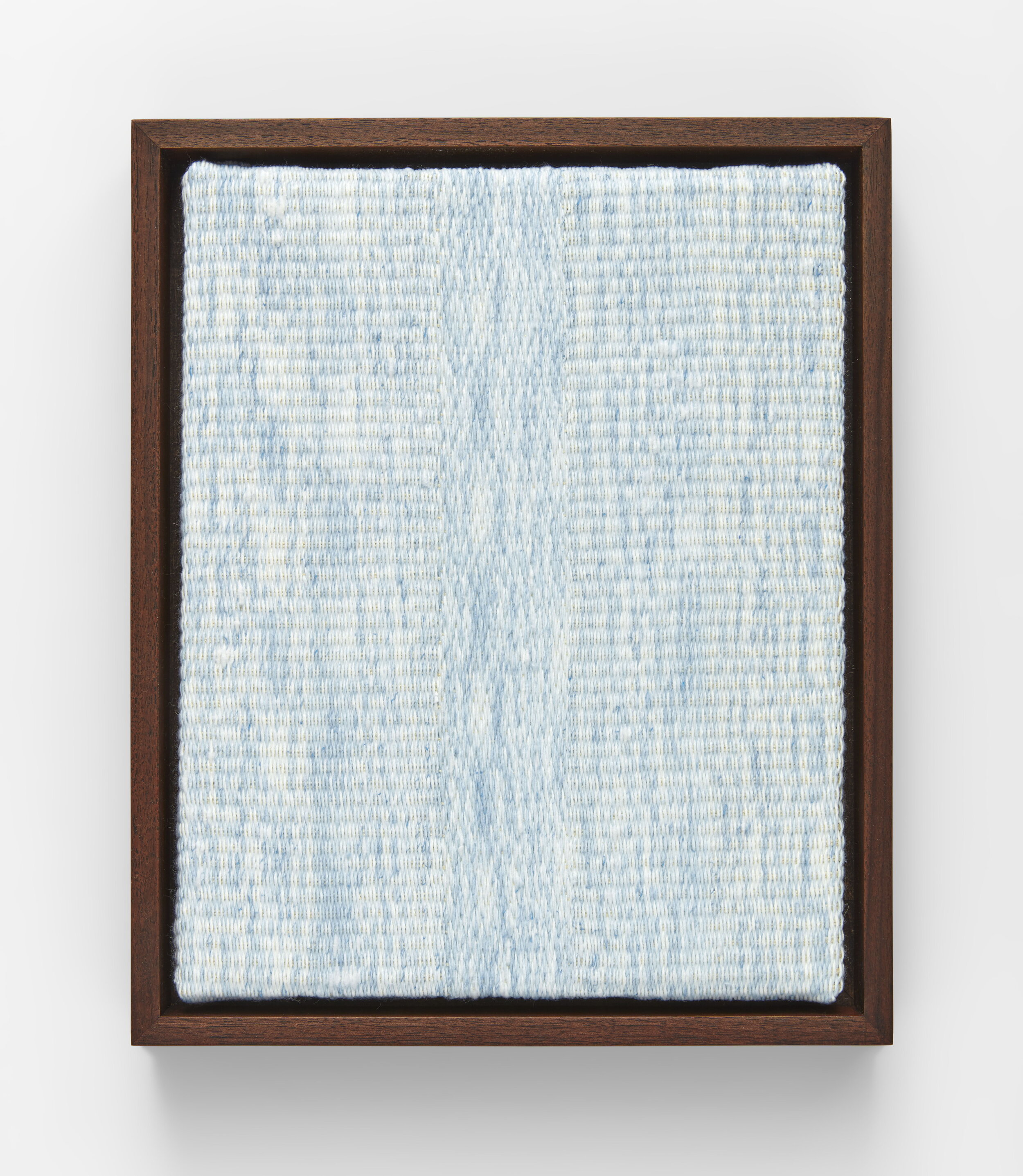
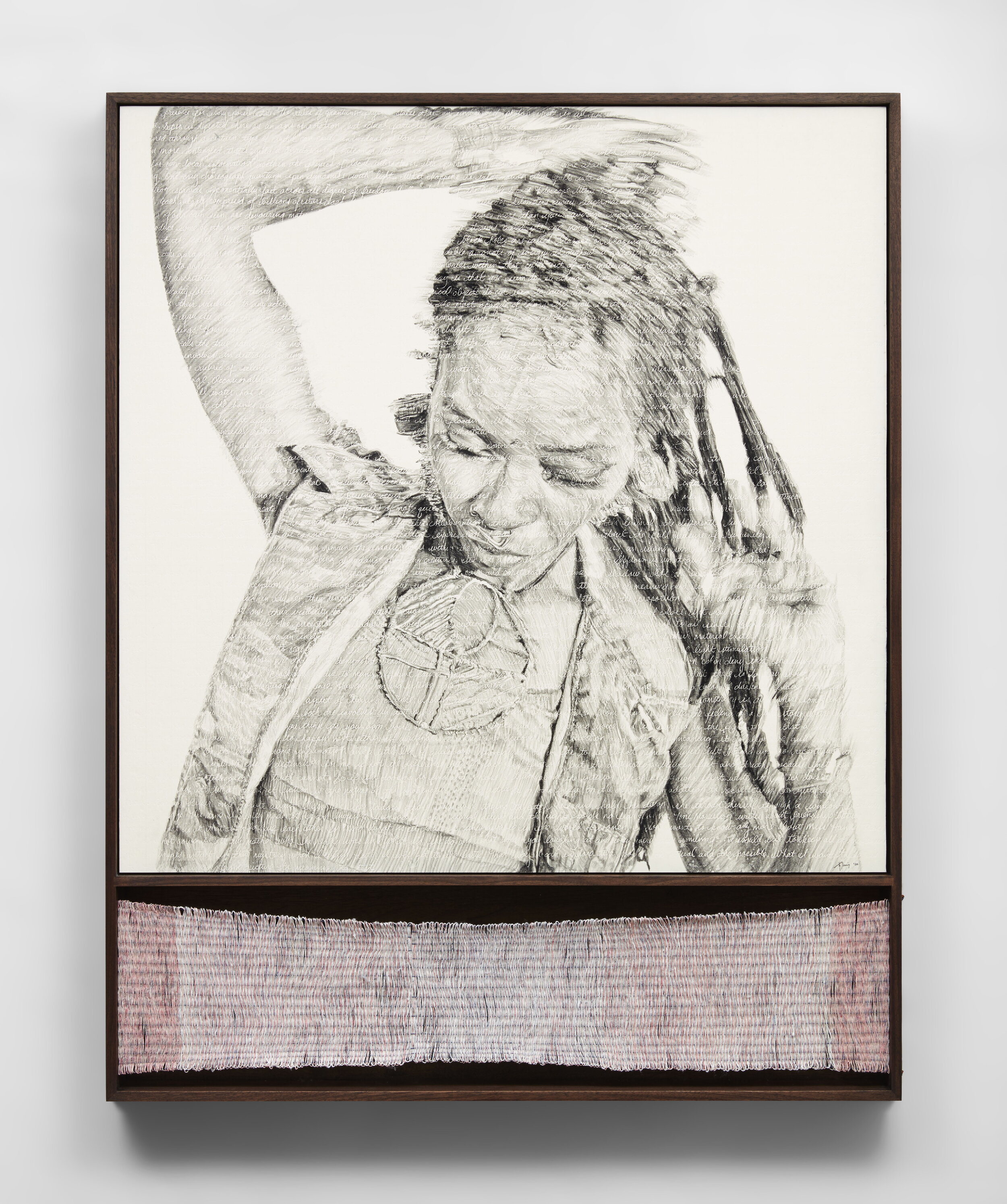

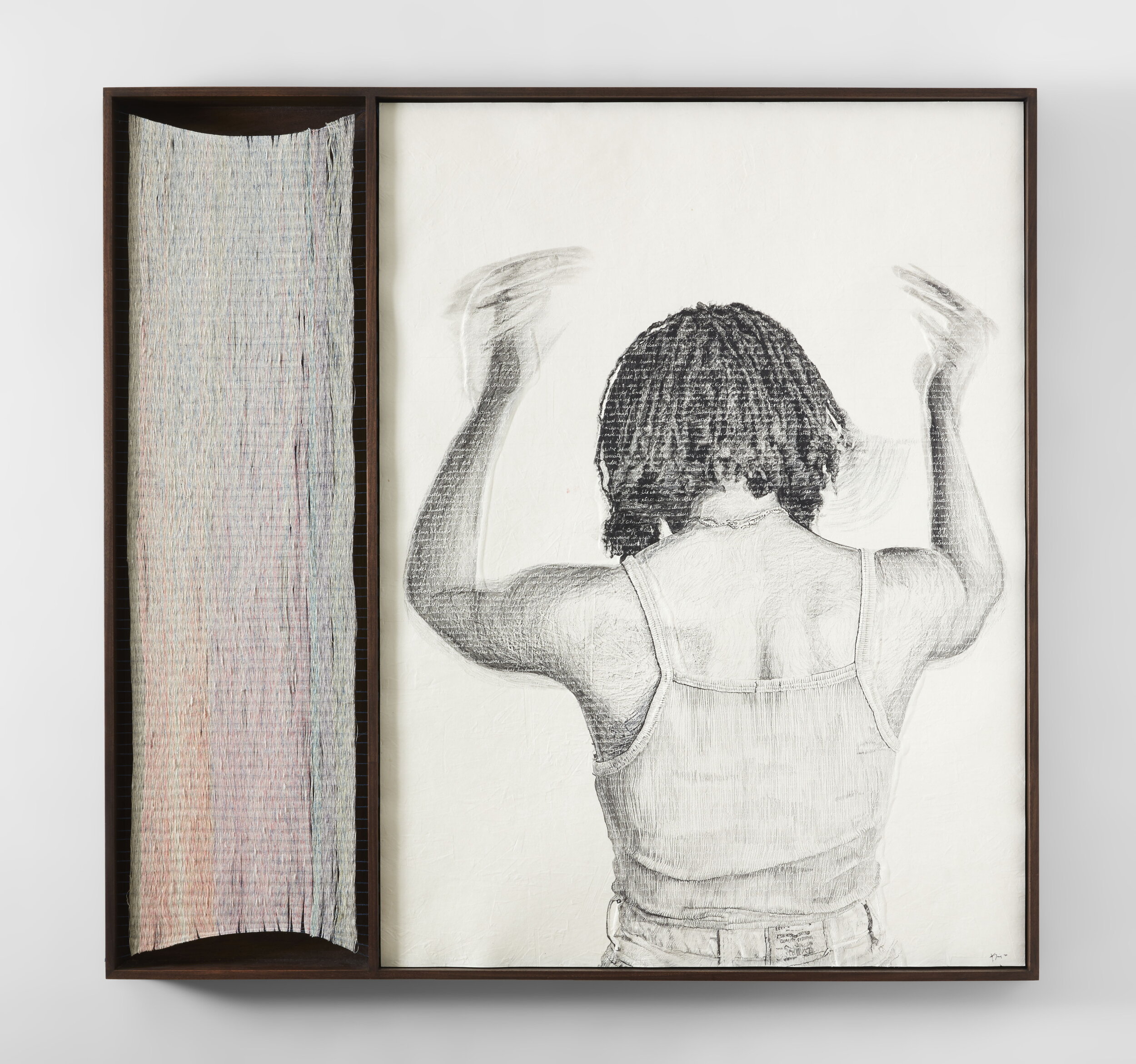

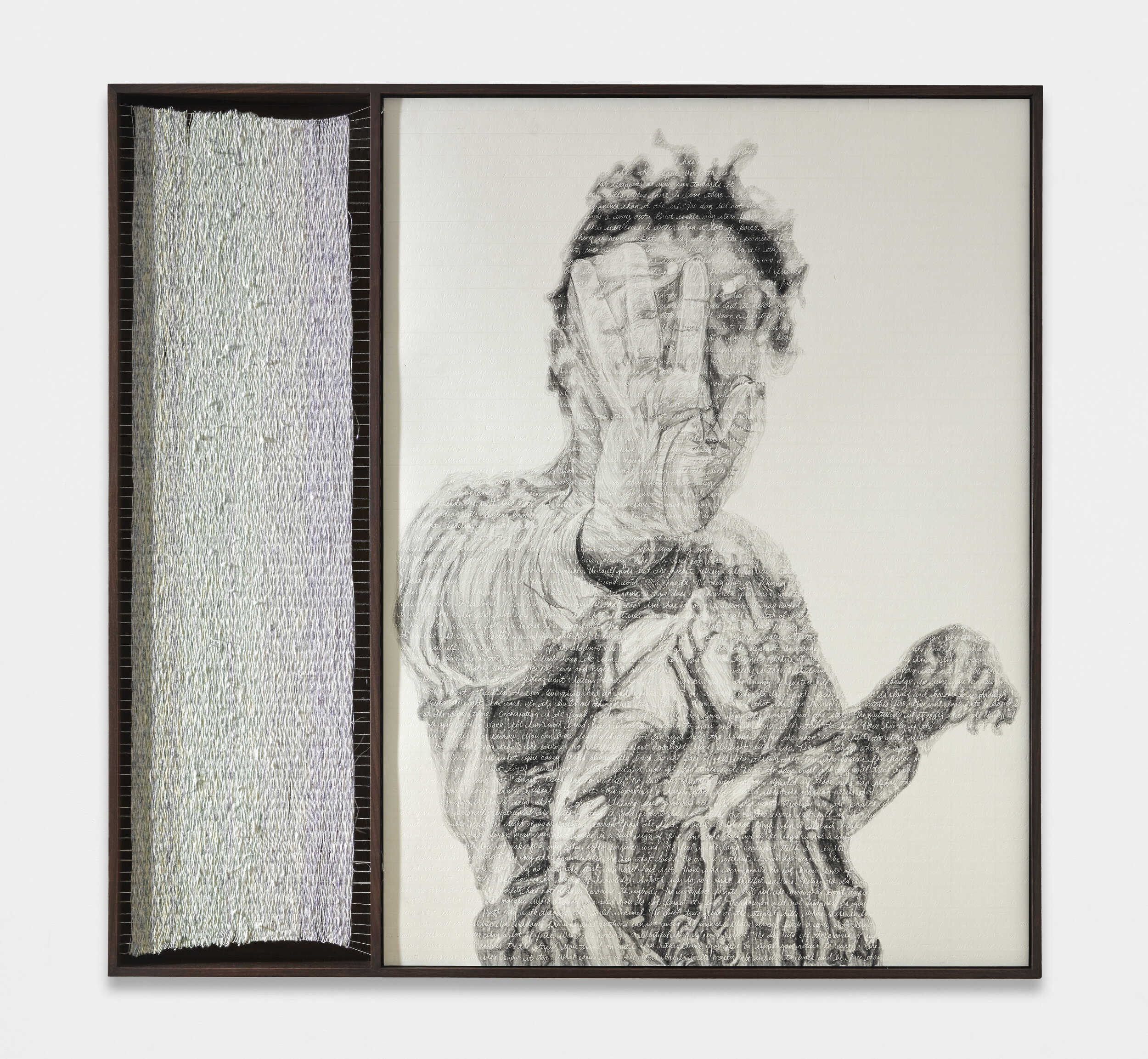
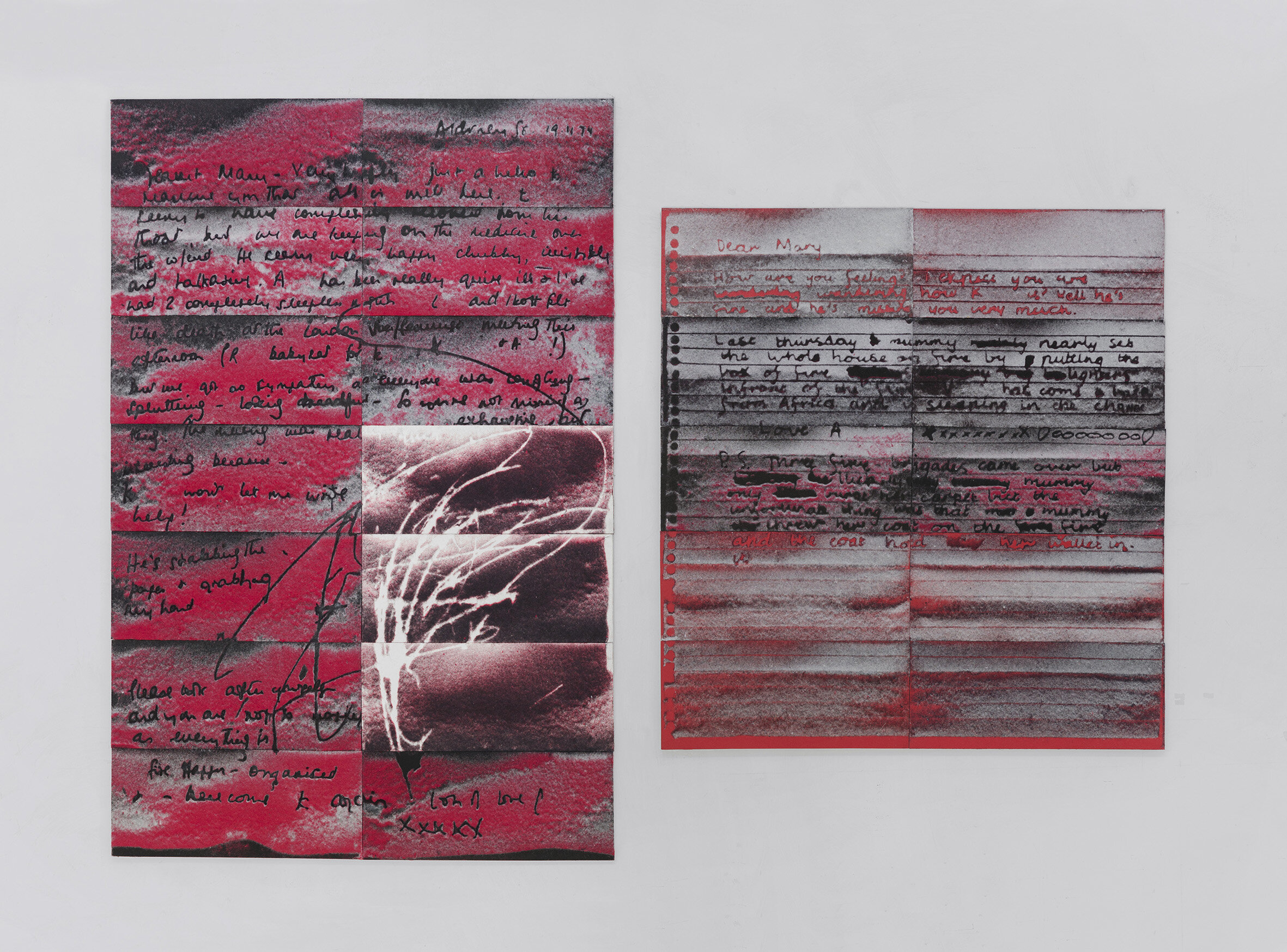
Pippy Houldsworth Gallery is delighted to present Kenturah Davis, Mary Kelly and Agnes Martin in Lines of Thought, an exhibition exploring the poetics and politics of language. Important unseen work by Kelly and new text drawings and weavings by Davis enter into conversation with the hand-drawn lines and gridded compositions of Martin’s works on paper.
Lines of Thought is the first UK presentation of work by young LA-based artist, Kenturah Davis. Four works (2020) from her series, Limen, pair portraiture with weaving, expressing how individuals are inseparable from the ideas and language that shape identity. Each portrait takes shape through a meticulous process of rubbing pencil across embossed paper inscribed with handwritten text. As the figure emerges, areas of script become legible, while others remain nearly invisible. Juxtaposed is a textile woven from related handwritten script on paper, transformed into thread using the Japanese technique shifu. Drawing on the etymological link between text and textiles, the fibres hint at their encoded information only through tiny flecks of ink. Davis draws on writings from Africa and its diaspora, including those by scholars Fred Moten and Jedidah Isler, touching on subjects from shadows, to black holes, time travel, proverbs and philosophy. Through concealment and illumination, Davis complicates binary categories of black and white, light and dark, East and West.
Exhibited for the first time will be Mary Kelly’s Post-Partum Document: Documentation VI (Silver Autone Prints) (1983), a unique installation made of 15 parts based on the artist’s artwork of the same name. It was while working on the book version for Post-Partum Document that Kelly devised this rare photographic technique. In Documentation VI, Kelly explores the linguistic formation and development of gender identity, referencing the Rosetta Stone to examine the importance of repetition to the development of language and meaning. Also on view is Kelly’s London, 1974 (2017) in which the artist uses her unique lint medium to integrate personal memories of motherhood and communal living as experienced by feminists in the 1970s. Kelly transposes this private, handwritten correspondence into gridded panels, the materiality of the process reflecting that of Davis’ weavings, and together forming a dialogue on our fragile comprehension of formative events and social structures.
Grid-like arrangements echo throughout the exhibition. This is crystallised in Agnes Martin’s drawing The Peach (1964). Delicate graphite lines appear to blaze an unswerving path into the infinite, only to reach an abrupt stop at the outer limits of the grid. Simultaneously constricting and liberating, the grid functions as a tool to approach ambiguous concepts of identity, memory and emotion. The drawings by Martin will be accompanied by works from her only major printing project, On a clear day (1973), inviting the viewer to meditate upon the mutability of structure and the potential of seriality to generate meaning. This body of work marks a critical point in Martin’s career, signalling a return to artmaking after a self-imposed hiatus. By the time of her pencil, ink and watercolour drawing, Untitled (1995), Martin’s grids have been simplified into straight horizontal (sometimes vertical) lines, not unlike those of a school workbook. As Nancy Princenthal has suggested, Martin’s hand drawn lines are directly ‘tied to handwriting and to verbal language … not so much represent[ing] conditions in the material world … as states of mind, or more precisely, lines of thought’.[1]
[1] Nancy Princenthal, Agnes Martin: Her Life and Art, Thames and Hudson (2015)
Parallels and Peripheries
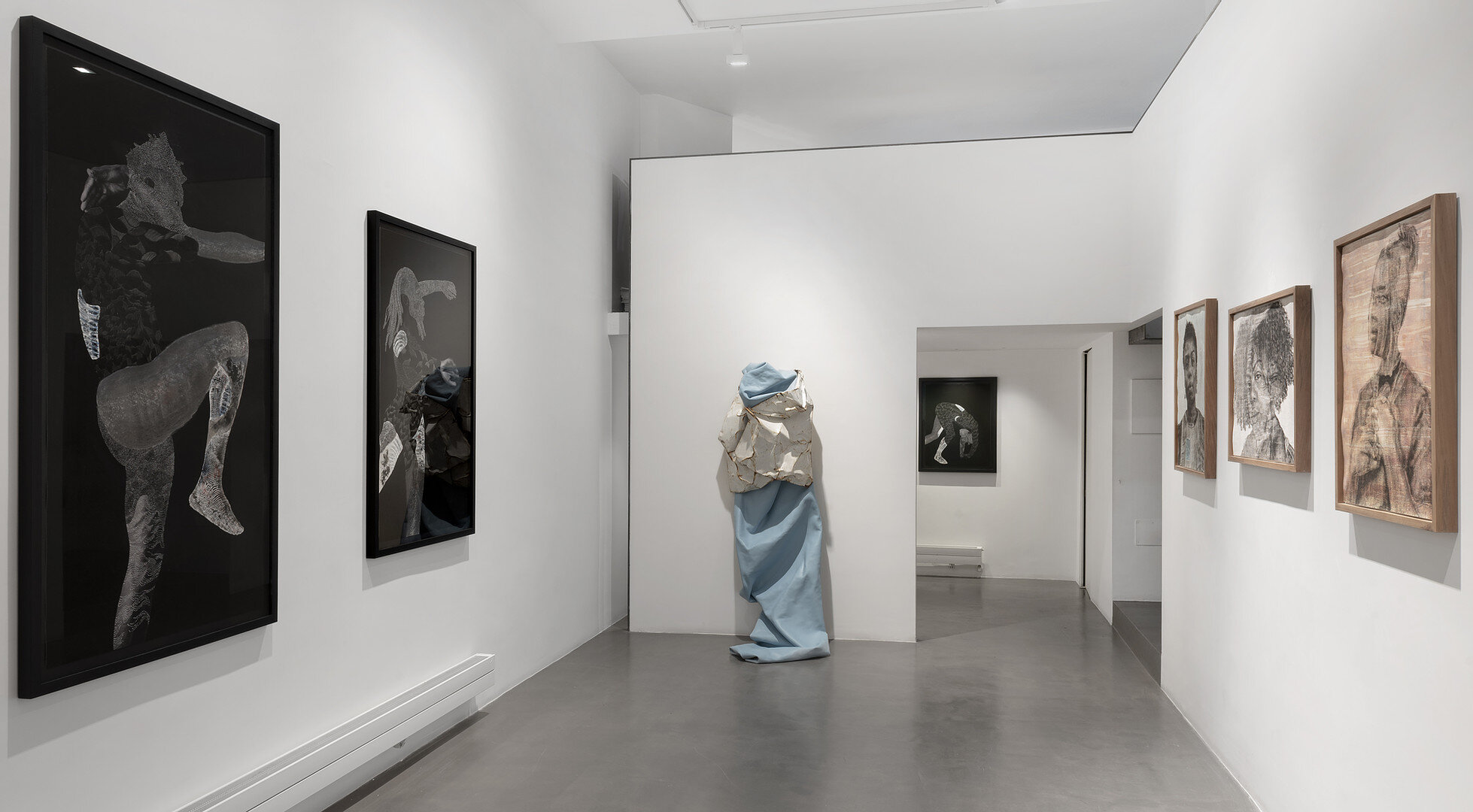

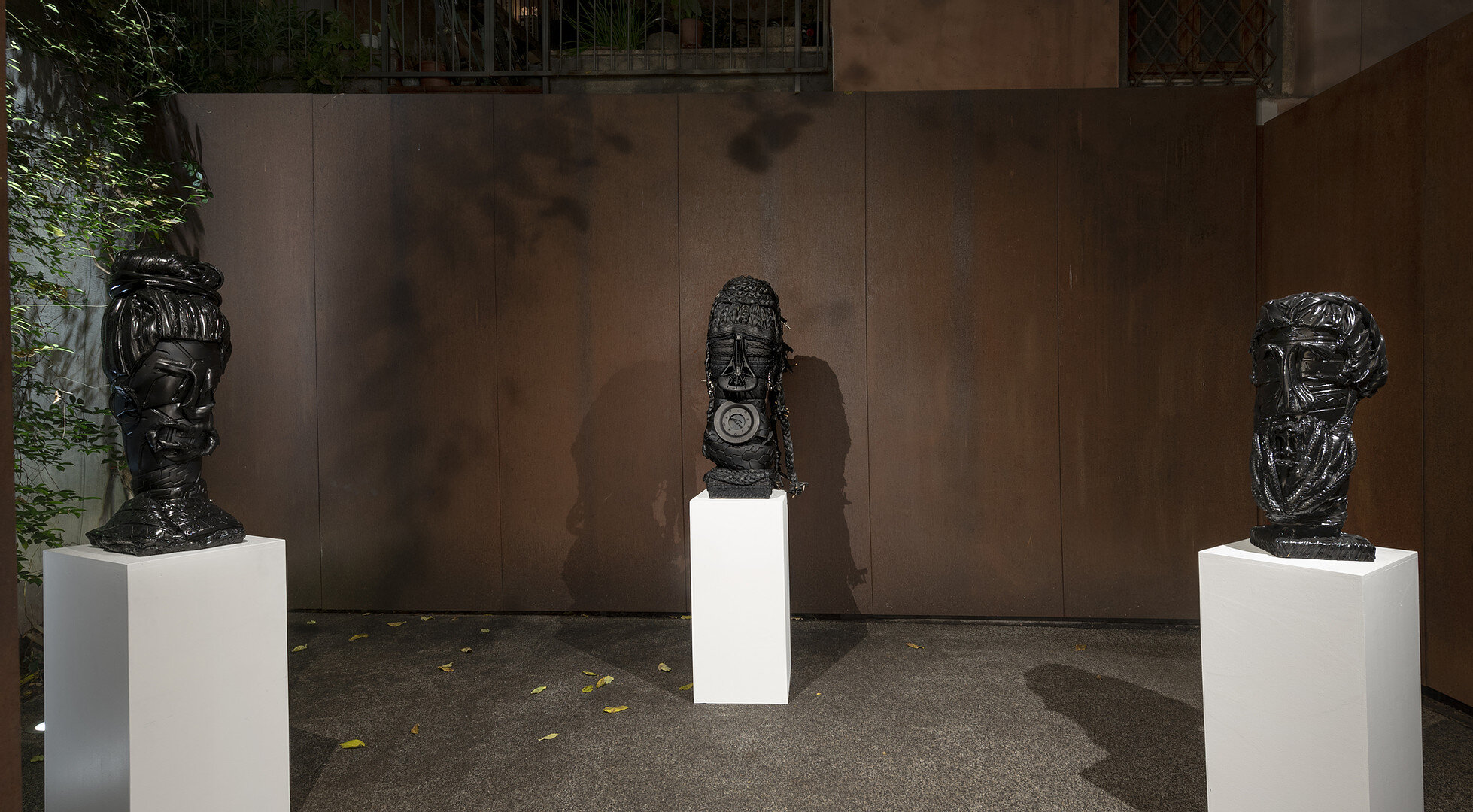
PARALLELS AND PERIPHERIES: Fractal and Fragments
Kim Dacres, Kenturah Davis, Basil Kincaid, Nate Lewis, David Shrobe, Kennedy Yanko
curated by Larry Ossei-Mensah
November 11th 2020 - January 30th 2021
Galleria Anna Marra is pleased to present PARALLELS AND PERIPHERIES: Fractals and Fragments curated by Larry Ossei-Mensah. The exhibition is the fourth iteration in a series - the first outside the United States - that investigates how visual artists cultivate their artistic practices by responding to ideas, narratives, myths, and materials, and highlights the works of six African American artists living and working in the United States: sculptures by Kim Dacres and Kennedy Yanko in addition to paintings, works on paper, and photo collages by David Shrobe, Kenturah Davis, Nate Lewis, and Basil Kincaid.
PARALLELS AND PERIPHERIES: Fractals and Fragments utilizes the mathematical concept of fractals to deeply explore what is seen on and beneath the surface. The use of this conceptual framework highlights the intricacy and nuances present within the shared history of Black aesthetics and Diasporic community. Moreover, it illustrates that although these artists might have somewhat similar experiences on the surface, upon closer interrogation, all of these artists possess voices and perspectives that are immensely varied and encompass a multiplicity of differences.
PARALLELS AND PERIPHERIES: Fractals and Fragments will provoke a stimulating discourse around the ideas of race, identity, materiality, and memory in a way that is rarely seen in this part of the world. As the capital, Rome is an ideal vantage point to further explore the themes of the series with the goal of leveraging the capacity of artists and artistic dialogue to illuminate the shifts in the power dynamics between the “center” and “periphery.”
The featured artists explore themes of empathy, culture, environment, and understanding of self and others in the world. The need for a discursive artistic engagement through this exhibition seeks to forefront our shared human experience in a climate that is increasingly urgent with the rise of nationalist, racist, xenophobic. In a time where Italy in particular is struggling to respond to global issues affecting them locally, such as the refugee crisis, the collateral damage associated with COVID-19, and migration to name a few, Fractals and Fragments moves the public to connect with the sense of humanity within one another and themselves. The crux of this exhibition endeavors to study the complexity of these issues from the perspective of African American artists within a rubric that at times is perceived as aesthetically and culturally homogeneous. By highlighting that diversity of thought, points of view and artistic approach from these artists are what makes the African American diaspora unique, PARALLELS AND PERIPHERIES: Fractals and Fragments will present an expanded view of contemporary art and the cultural zeitgeist.
The inaugural edition of PARALLELS AND PERIPHERIES took place in Miami Beach at Oolite Arts in the fall of 2018 and presented works by eight women artists whose dynamic practices reframe and redefine how artmaking fits into a broader global discourse impacting marginalized communities. The second edition was exhibited in Detroit at MOCAD in 2019. It focused on the roles that art, technology and science play in the creation of the work of artists. The third iteration of the series, took place at VisArts in Rockville, MD during the Fall of 2019, and sought to explore how emigrant and first-generation immigrant artists are using their work to negotiate issues of migration, mobility, identity, visibility and invisibility in a time of social volatility.
Conversation with Toyin Ojih Odutola
Kenturah Davis speaks with fellow artist, Toyin Ojih Odutola about her work and new exhibition at the Barbican Centre in London. This conversation shares some of their mutual interests, spanning topics from drawing to otherness to shadows. The recording is paired with a slideshow of drawings by both artists. This is for the archives.
Toyin Ojih Odutola:
toyinojihodutola.com/
barbican.org.uk/whats-on/2020/event/toyin-ojih-odutola-a-countervailing-theory
Diedrick Bracken and Kenturah Davis on Matthew Brown Los Angeles Podcast
In this debut episode of the Matthew Brown Los Angeles Podcast, artist Kenturah Davis conducts an interview with artist Diedrick Brackens in a conversation that spans the politics of pandemics, the history and process of Brackens' tapestry weavings, and Brackens' parallel, though lesser-known, practice of basket weaving.
Using text as a point of departure, Kenturah Davis explores the fundamental role that language has in shaping how we understand ourselves and the world around us. This manifests in a variety of forms including drawings, photographs and performances. Davis recently opened her first solo institutional exhibition, Everything That Cannot Be Known at the Savannah College of Art and Design Museum (2020). Other solo and two-person exhibitions include Blur in the Interest of Precision, Matthew Brown Los Angeles (2019); a two-person exhibition with Desmond Lewis at Crosstown Arts, Memphis, TN in coordination with the traveling venue, Seed Space (2019); as well as Narratives and Meditations (2014) and sonder (2013) at Papillion, Los Angeles. Davis lives and works between Los Angeles, CA and Accra, Ghana.
Diedrick Brackens is best known for his woven tapestries that explore allegory and narrative through the artist’s autobiography, broader themes of African American and queer identity, as well as American history. Recent solo exhibitions include blessed are the mosquitoes, Jack Shainman Gallery, New York (2020); If You Have Ghosts, Alabama Contemporary Art Center, Mobile, AL (2020); Allegiance, University Art Gallery, The University of the South, Sewanee, TN (2019); Diedrick Brackens: darling divined, The New Museum, New York (2019); and unholy ghosts, Various Small Fires, Los Angeles (2019). Brackens lives and works in Los Angeles, CA.
You Are An Artist
You Are an Artist brings together more than 50 assignments gathered from some of the most innovative creators working today, including Kenturah Davis, Sonya Clark, Michelle Grabner, The Guerrilla Girls, Fritz Haeg, Pablo Helguera, Nina Katchadourian, Toyin Ojih Odutola, J. Morgan Puett, Dread Scott, Alec Soth, Gillian Wearing, and many others.
You’ll learn about why these artists are offering each assignment, what works from art history inform the activity, and see some of the outstanding responses that have been made to the assignments. It also offers a plethora of new tips and cheats and variations.
The Occidental
Kenturah is featured in the winter issue of Occidental College’s magazine. As a proud alumna and professor in the Art History and Visual Art Department, Davis reflects on her Oxy days as a student and athlete (volleyball!).
Matthew Brown Los Angeles announces representation
Matthew Brown Los Angeles announces the representation of their artists, including Kenturah Davis. The gallery opened in 2019 with her show, “Blur In the Interest of Precision.
rihannazine, i-D Special Edition
Rihanna, photographed by Mario Sorrenti
Kenturah, photographed by Mario Sorrenti
“For me, this very special issue of i-D represents change and culture. It is dedicated to some of the people who are progressively reshaping the communities across fashion, music, art and activism - creating a more inclusive and diverse future.”
i-D Magazine kicks off the new decade and 40th anniversary year with Rihanna for the special, limited edition issue, “rihannazine”. The visually-driven project is a celebration of incredible people, handpicked by Ri and i-D for an inspirational and progressive impact across culture, art, fashion and activism.
Kenturah is featured in this issue, including an interview with Rihanna and her 2020 manifesto.
Explore the world of 'Rihannazine' digitally here, or order your limited edition print copy (no. 01, 2020) here.
Photography by Mario Sorrenti
Editor-in-Chief and styling by Alastair McKimm
Casting Director: Samuel Ellis
Artsy Feature: These Emerging Black Artists Are the Future of Figurative Painting
Kenturah Davis is named in this list of Black artists, written by Isis Davis-Marks, which also includes Jerrell Gibbs, Joy Labinjo, Kassou Seydou, Arcmanoro Niles, Gerald Lovell, Somaya Critchlow, Wangari Mathenge, Tajh Rust and Kudzanai-Violet Hwami.
https://www.artsy.net/article/artsy-editorial-emerging-black-artists-future-figurative-painting
